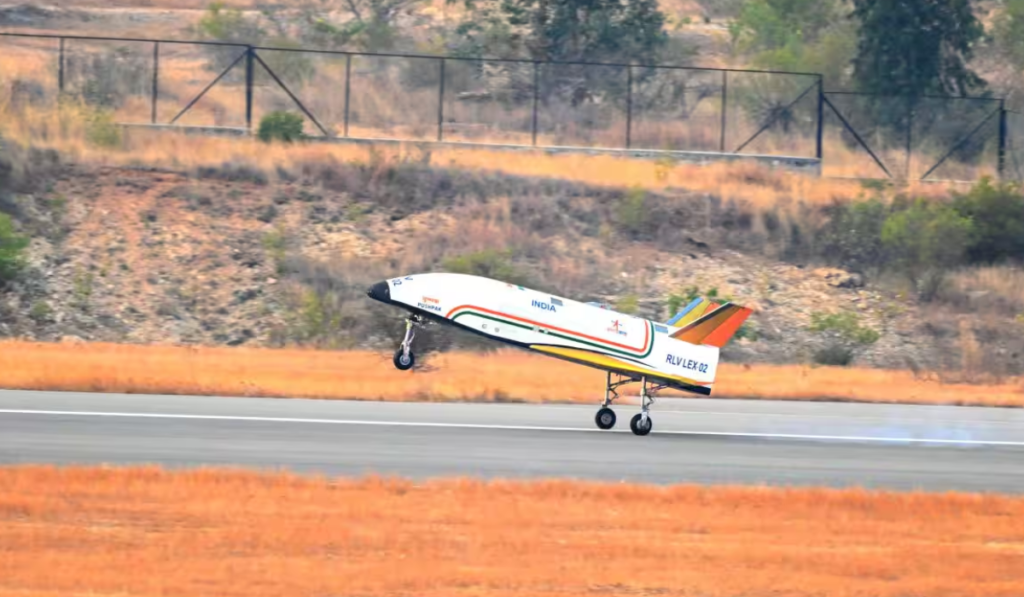On Friday, ISRO announced a significant advancement in reusable launch vehicle technology with the completion of the RLV LEX-02 landing experiment. This marks the second in a series of experiments conducted at the Aeronautical Test Range in Chitradurga, Karnataka, at 7:10 am.
After the RLV-LEX-01 mission was accomplished last year, RLV-LEX-02 demonstrated the autonomous landing capability of the reusable launch vehicle (RLV) from off-nominal initial conditions at release from helicopter, the Bengaluru-headquartered space agency said in a statement.
“The RLV was made to undertake more difficult maneuvers with dispersions, correct both cross-range and downrange, and land on the runway in a fully autonomous mode,” it said.
Also Read : IndiGo, a Budget Airline, Receives ‘Airline of the Year’ Award
ISRO’s Reusable Launch Vehicle (RLV) LEX-02
The winged vehicle, called Pushpak, was lifted by an Indian Air Force Chinook helicopter and was released from 4.5 km altitude. After release at a distance of 4 km from the runway, Pushpak autonomously approached the runway along with cross-range corrections. It landed precisely on the runway and came to a halt using its brake parachute, landing gear brakes, and nose wheel steering system, ISRO said.
It added that this mission successfully simulated the approach and high-speed landing conditions of RLV returning from space.
“With this second mission, ISRO has re-validated the indigenously developed technologies in the areas of navigation, control systems, landing gear, and deceleration systems essential for performing a high-speed autonomous landing of a space-returning vehicle,” the space agency said.
Also Read: Upcoming Launch: OpenAI GPT-5 Expected Soon, Reports Say
Advancements in Reusability and Mission Accomplishments
The winged body and all flight systems used in RLV-LEX-01 were reused in the RLV-LEX-02 mission after due certification/ clearances. Hence, the reuse capability of flight hardware and flight systems is also demonstrated in this mission, ISRO said.
Based on the observation from RLV-LEX-01, the airframe structure and landing gear were strengthened to tolerate higher landing loads, it said.
The mission was accomplished by Vikram Sarabhai Space Centre (VSSC) along with the Liquid Propulsion System Centre (LPSC) and the ISRO Inertial Systems Unit (IISU). ISRO chairman S Somanath congratulated the team for the flawless execution of this complex mission. On the success of the landing experiment, VSSC Director Dr S Unnikrishnan Nair said through this repeated success, ISRO could master the terminal phase maneuvering, landing, and energy management in a fully autonomous mode, which is a critical step towards the future.
Also Read: Isro successfully lands ‘Pushpak’, India’s first Reusable Launch Vehicle











More Stories
देहरादून: सूर्यधार रोड पर भिड़ीं गाड़ियां, शख्स को कुचलने की कोशिश; 9 गिरफ्तार
शाहरुख खान संग ये खास शख्स भी नहीं था मौजूद, फिर भी ग्रैंड रहा अबराम का 12वां बर्थडे, सामने आया पार्टी का इनसाइड वीडियो
17 Women Cadets Join NDA Parade First Time